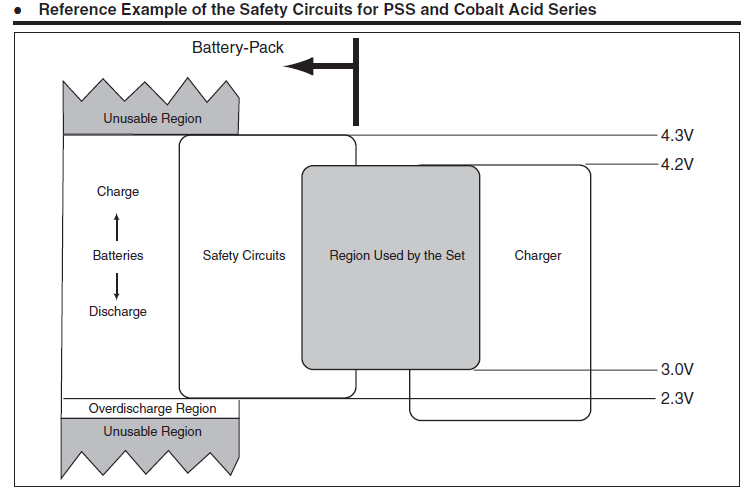Charger Xtar MC4
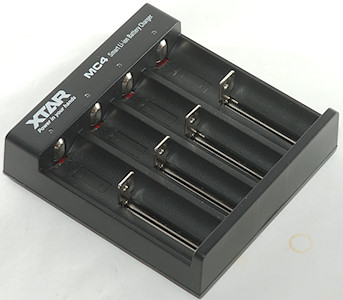

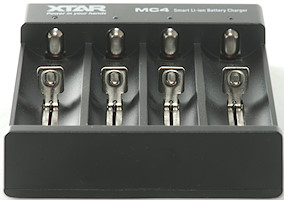
This is a fairly small 4 slot charger with usb power input from Xtar. It can only charge LiIon batteries.
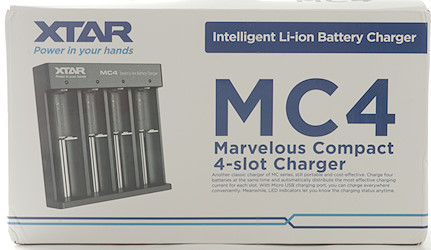
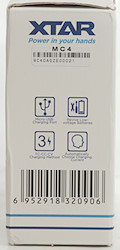
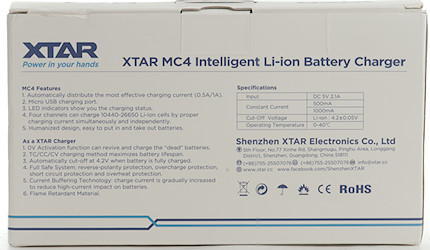
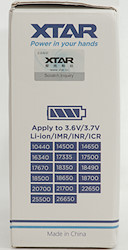
The cardboard box lists lot of specifications, battery types and features.
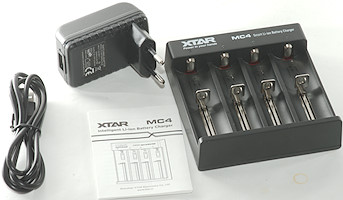
The box contains the charger, a usb power supply, a usb cable and a manual.

The charger has a micro usb power connector.

The charger has a red/green led for each slot.
When using only the outer slots the charger will charge with 1A, when charging in any of the center slots the current will drop to 0.5A for all slots.
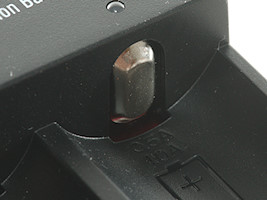
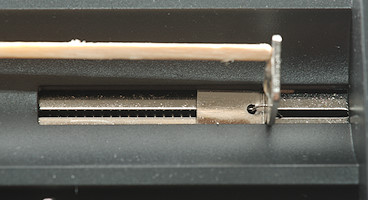
The slots uses the usual construction and works well. They can handle batteries from 31mm to 71.7 mm long.


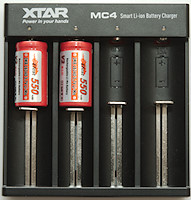
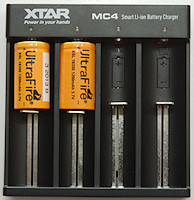
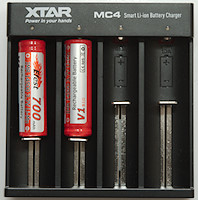
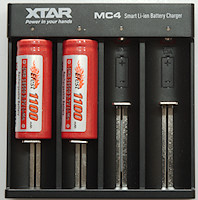
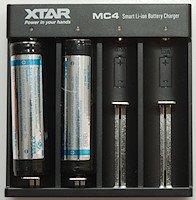
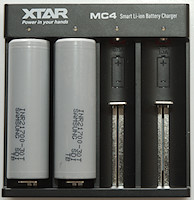
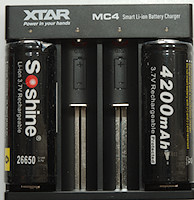
The charger can handle two 26xxx battery at a time.
The charger can easily handle 70 mm long batteries, inclusive flat top cells.
Measurements
-
Discharges with less than 0.005mA when not connected to power
-
Discharges with less than 0.005mA when powered with a full battery
-
Will restart if battery voltage drops below 4.10 volt.
-
Below 0.5 volt the charger will charge with about 5mA
-
Below 2.8 volt the charger will charge with about 50mA
-
Above 2.8 volt it will apply regular charge current.
-
Charge will restart charging after power loss, but not on battery insertion.
-
Power consumption when idle is 0.26 watt for adapter and charger (The charger uses 28mA).
-
When center slota are full, outer slots will automatic increase to 1A
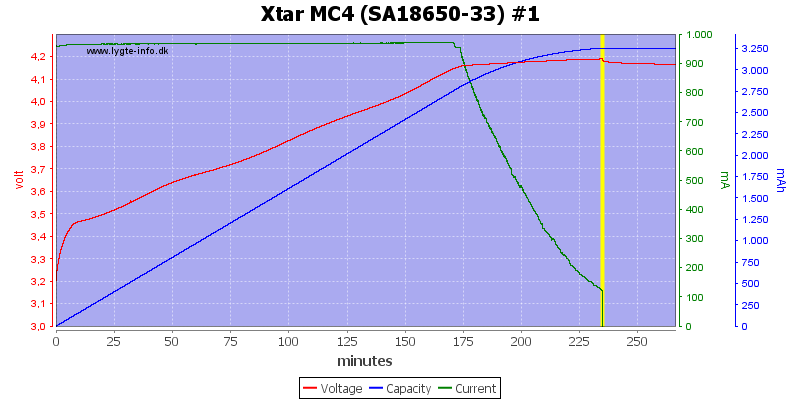
This is a nice CC/CV charge curge with a termination current around 120mA.
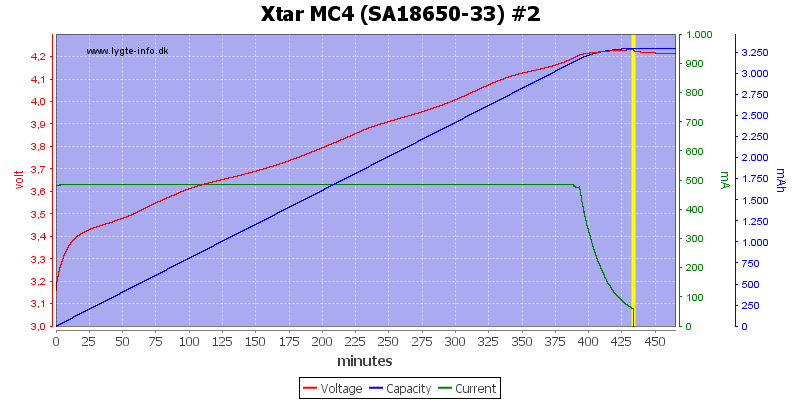
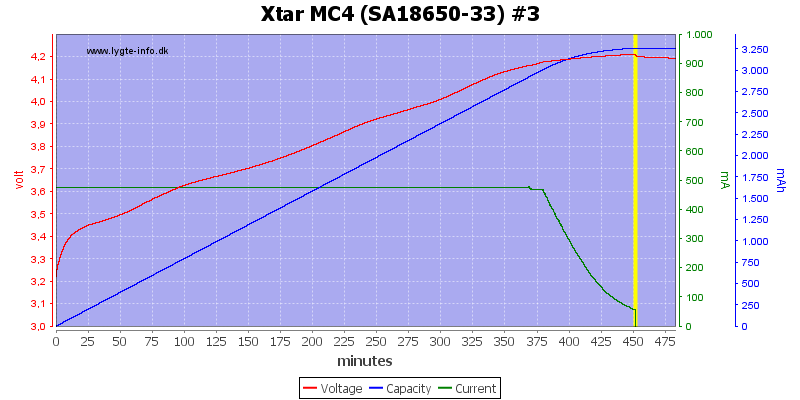
The two center slots charges with 0.5A, again with a nice CC/CV charge curve, the termination current is lower here (60mA), this is an advantage for smaller cells.
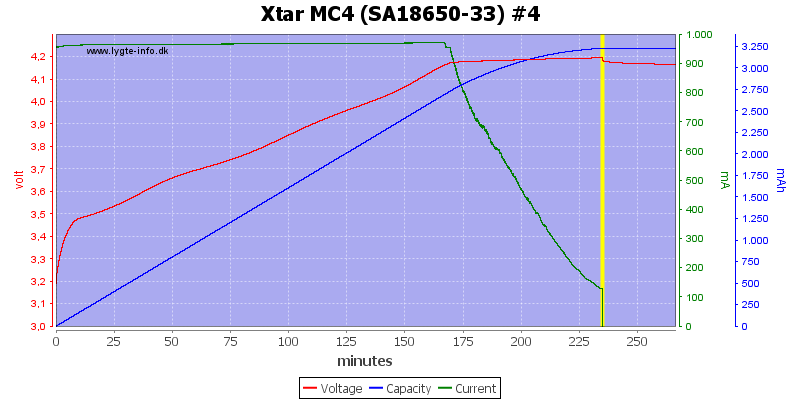
This slot is a 1A slot.
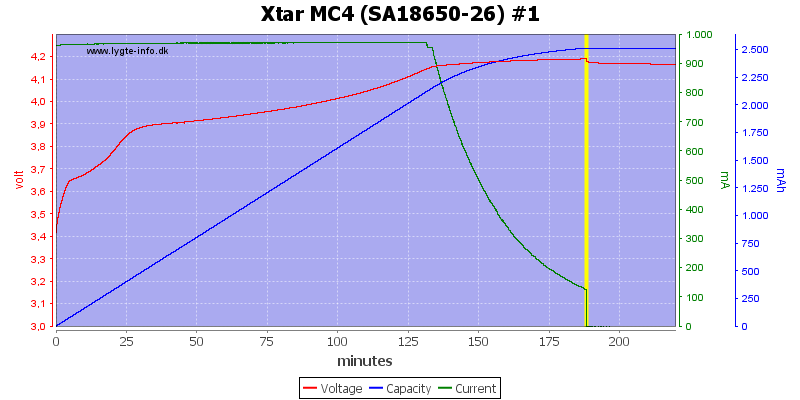
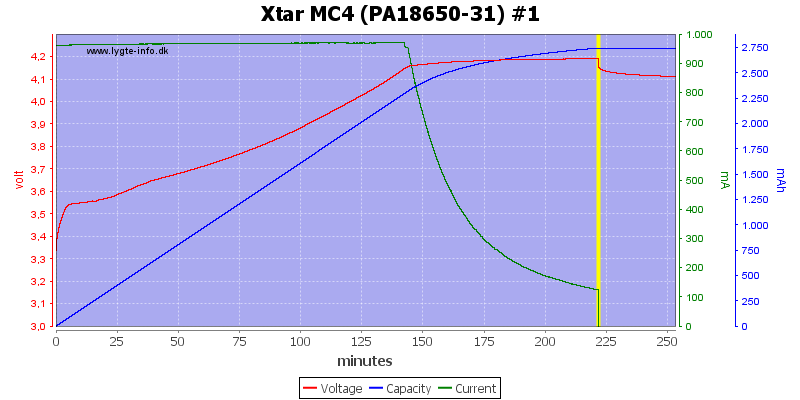
No surprice with these cell, it is nice CC/CV charges.
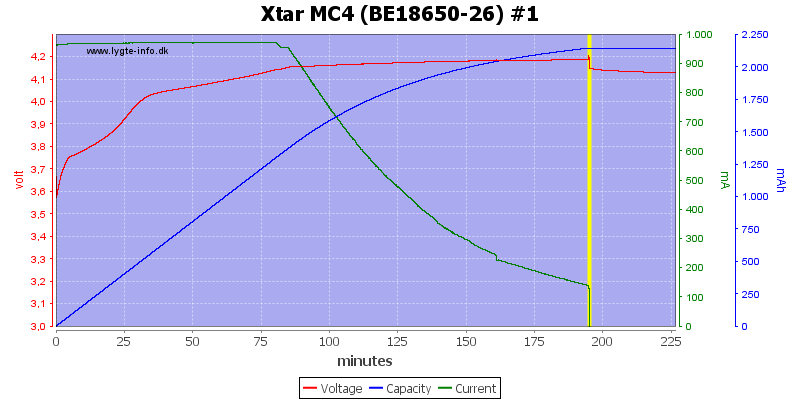
Even with this old cell.
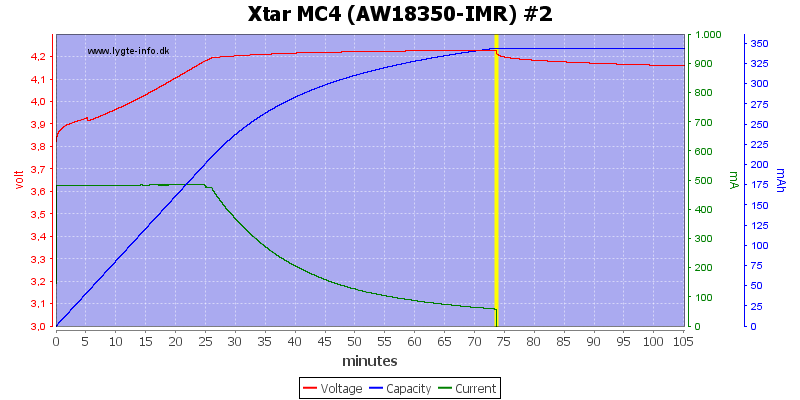
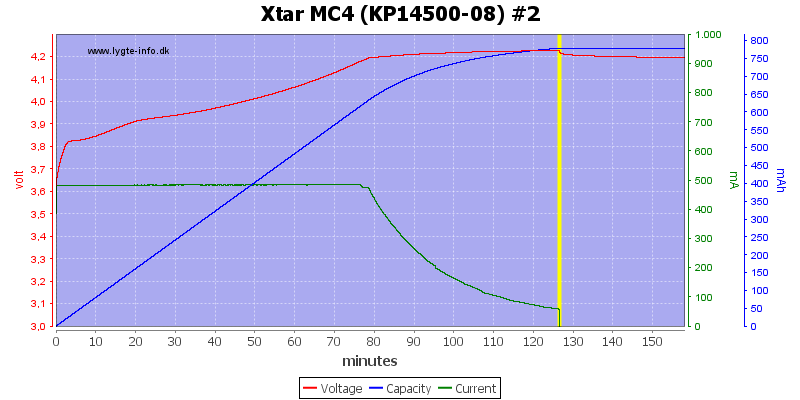
The two small cells is charged fine, the lower termination current on the 0.5A slot is a good thing here.
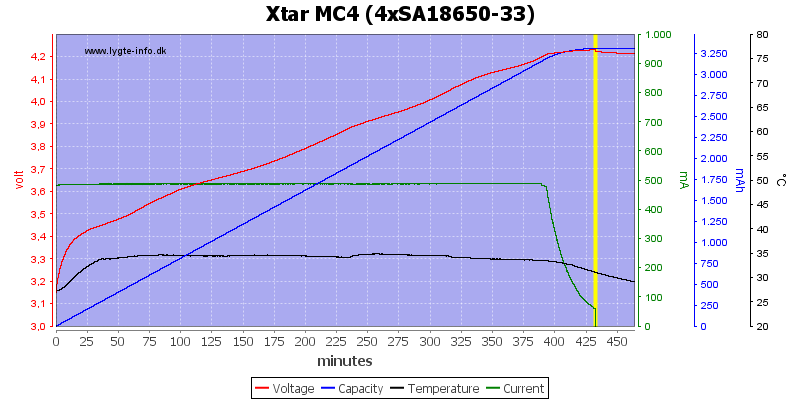
With four cells in the charger all slots will charge at 0.5A. This curve is from the first slot and as can be seen it will adjust not only the charge current, but also the termination current (nice).
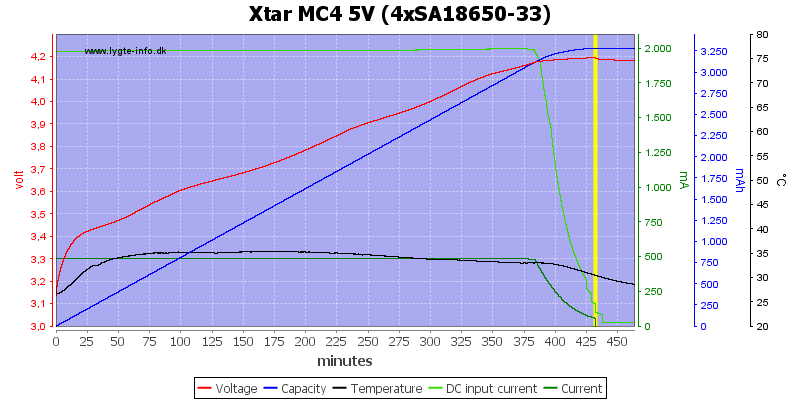
Using my own power supply I can see the charger uses about 2A from the usb charger.

Adding a 0.5ohm resistor to simulate a long cable or weak charger is very problematic for this charger.
It will charge, but it over charges the batteries. This is not good.
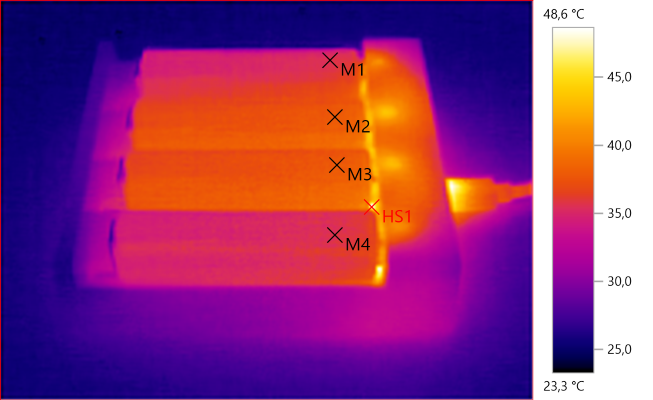
M1: 35,6°C, M2: 38,1°C, M3: 38,1°C, M4: 35,6°C, HS1: 48,6°C

M1: 35,9°C, M2: 38,4°C, M3: 37,9°C, M4: 35,9°C, M5: 38,1°C, M6: 43,4°C, HS1: 54,0°C

The charger is very fast to initialize, it takes about 0.5 second.
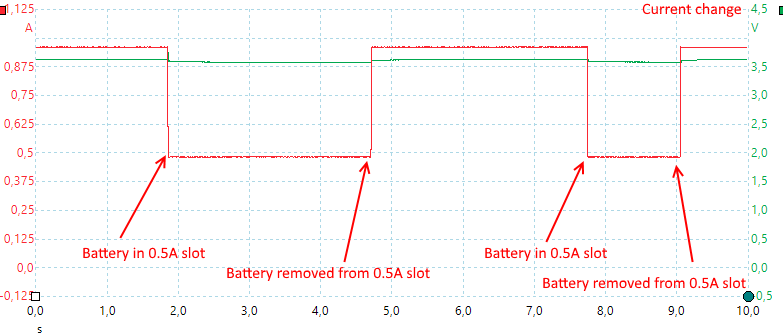
When putting a battery in the center slots the charger will reduce the current on all slots to 0.5A.
USB power supply
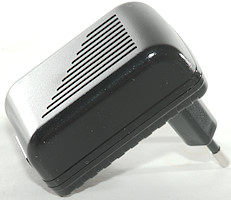
I decided to do a test of the supplied usb power supply.
-
Idle power is 0.06 watt for adapter.
-
Output is coded as Apple 2.1A
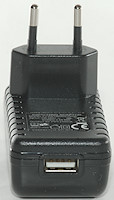
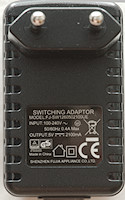

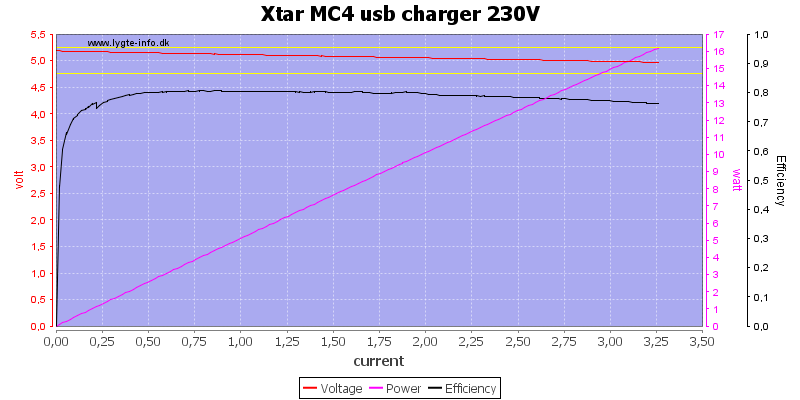
The supplied usb power can easily deviler the required 2A and maintain 5V output.
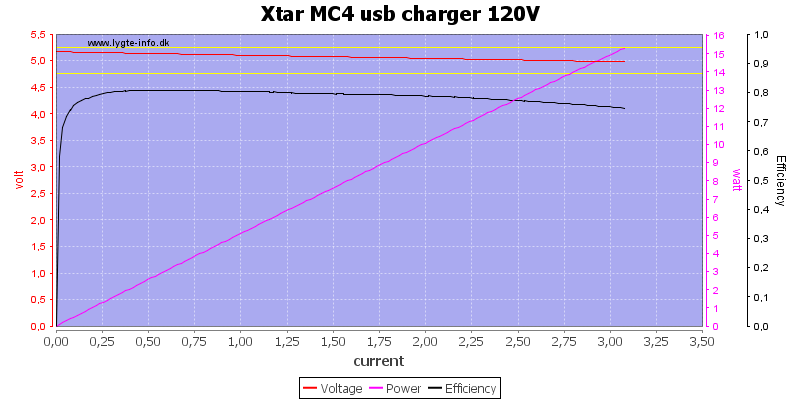
Also when used on 120VAC mains.
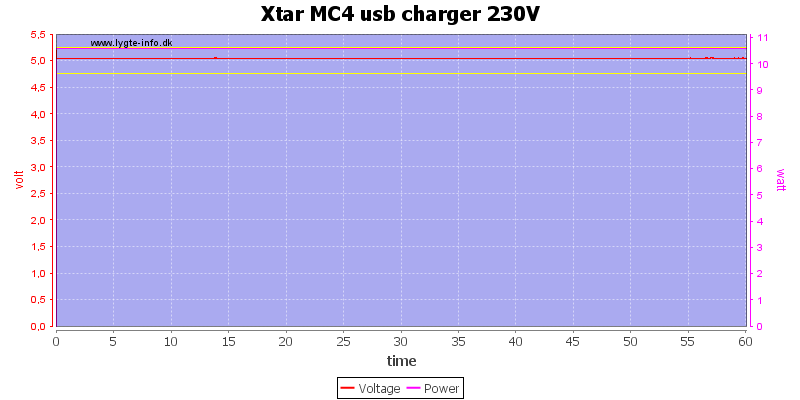
No problems running one hour at 2A.
The temperature photos below are taken between 30 minutes and 60 minutes into the one hour test.
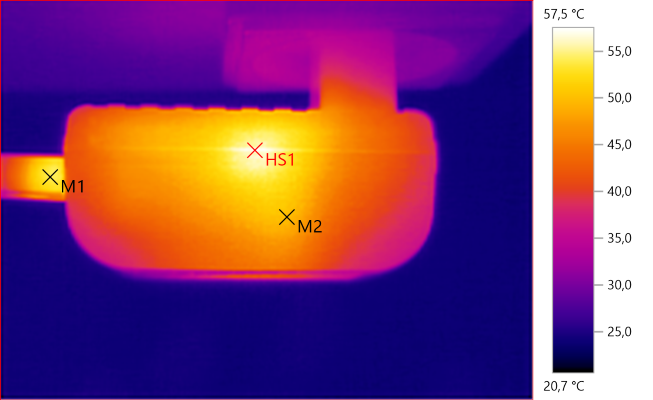
M1: 53,9°C, M2: 49,9°C, HS1: 57,5°C
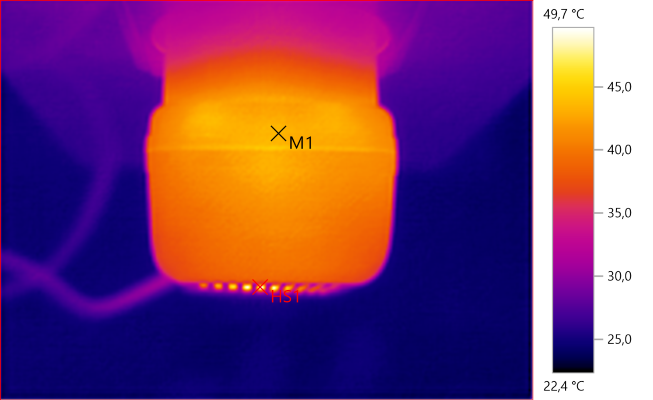
M1: 43,5°C,HS1: 49,7°C
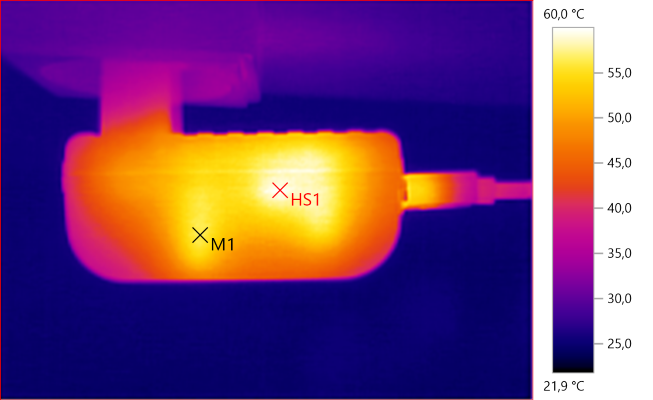
M1: 56,6°C, HS1: 60,0°C
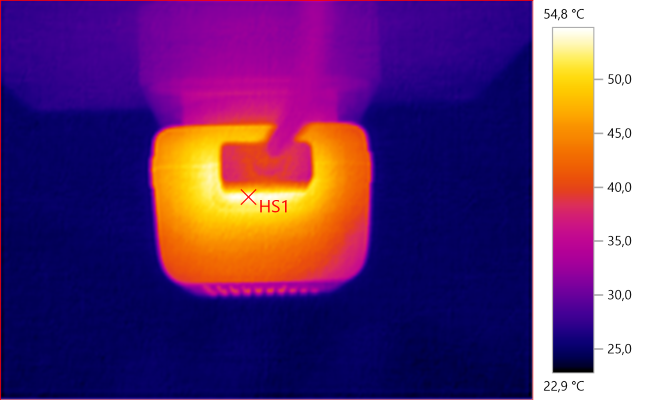
HS1: 54,8°C
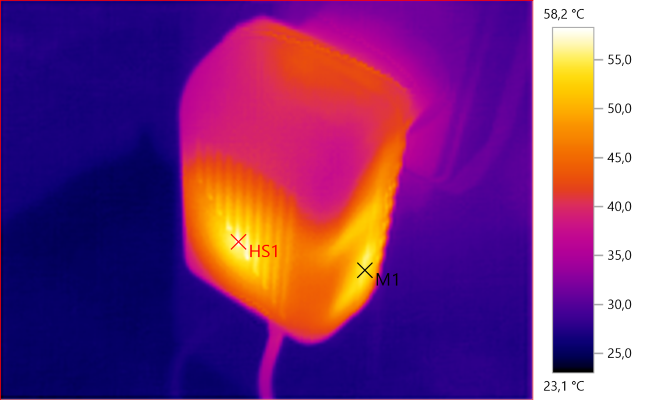
M1: 54,7°C, HS1: 58,2°C
Testing with 2830 volt and 4242 volt between mains and low volt side, did not show any safety problems.
Conclusion
The charger do a very fine charge curve both for large and smaller LiIon batteries.
BUT there is one serious caveat: It need a good power supply. If it has a week power supply or a long thin cable it may overcharge the batteries!
Notes
The charger was supplied by a Xtar for review.
Xtar is aware of the issue and will fix it. For these first MC4 Xtar recommends using the supplied charger and cable.
Here is an explanation on how I did the above charge curves: How do I test a charger
